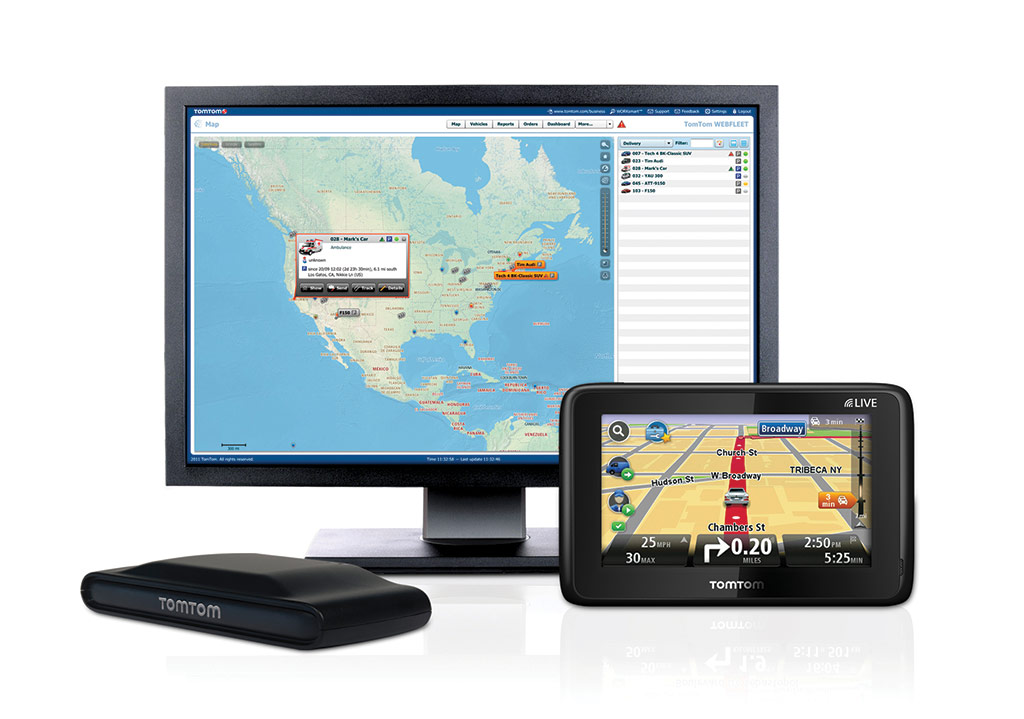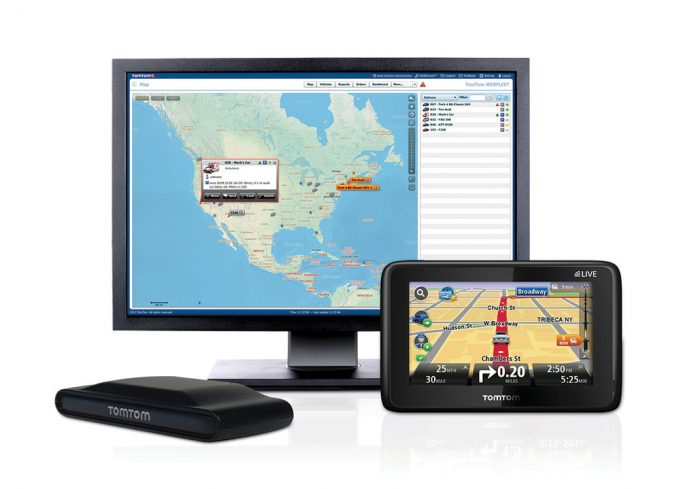
By Matt Gunzenhaeuser, TomTom Business Solutions
Labor and fuel are the two biggest line items on a tow operator’s operating budget. If you could cut fuel costs by 15 percent or more, it would have a major impact on your business. What about maintenance costs? Insurance? Liability?
Technology has undoubtedly changed the tow industry – in some cases, making things more challenging, but, in many cases, making it easier than ever before to get a handle on your business, save costs, and improve performance. One development that is delivering value to towers is the integration of GPS/fleet management systems with traditional dispatch and management software. The right commercial GPS solution can help you determine which is the best vehicle to dispatch to a given job, and give your drivers the best tools to perform their job safely and effectively.
Reducing Mileage and Idling
Integrating GPS into your dispatching and back office operations can have a measurable impact on your business. Smart dispatching and traffic avoidance do much more than simply provide turn-by-turn directions. They can actually reduce time and mileage driven for the current workload. With the average tower spending close to $2,000 per month per truck on fuel, saving 15 percent can really add up.
We all know that reducing miles driven and minimizing idling are the best ways to reduce fuel consumption. Idling continues to be a problem across the industry. After deploying a GPS solution with engine idle monitoring, one tower found that some of his trucks were idling as much as four or five hours a day. With this information, he was able to set a company standard – and ensure that his drivers were following the rules.
And GPS solutions can clearly impact miles driven by providing smart route planning and turn-by-turn directions that get vehicles to the job in the most efficient fashion.
Route planning, smart dispatch and traffic avoidance can also increase revenue opportunities. What if you gained 30 minutes of time per driver per day? That’s two and a half hours per week per truck. For a small operator running 10 trucks, that represents 25 additional work hours per week freed up for more jobs and more revenue.
Improving Driver Performance
Imagine sitting in the passenger seat next to every driver, every day. Can you imagine what their driving habits would look like? If they knew you were watching, you’d suddenly have a fleet of vehicles that never sped, where hard braking and hard steering were unheard of, and idling was just not an option.
Today, technology allows you to virtually ride along with every driver. With active visibility into how your drivers behave, you can move to a model where each employee treats your vehicles as well as they treat their own, and that leads directly to significant reductions in maintenance costs. In addition, the ability to monitor PTO and after-hours driving can eliminate side jobs and non-revenue generating driving.
Having the latest technology is important – but combining that with the right business practices is what really makes the difference. Setting policies, and then deploying the right technology to help measure compliance is the best way to make a real impact. After all, you can’t manage what you can’t measure.
Maintenance can also represent a significant cost. In this case, prevention is better than the cure. GPS solutions that offer “active driver feedback” engage drivers by providing them with data about their behavior while they drive, making them more invested in better driving habits, while also helping the tow operator to monitor what they are doing. Towers who manage performance and bonuses through driver scores have seen significant changes driving habits, resulting in lower maintenance costs.
Liability is also a larger concern than ever before. State and federal authorities can hold you responsible if a driver is in an accident while using a mobile device. Still, the use of cellphones is still way too common in the tow industry. GPS solutions deliver all of the dispatch and driving information a driver needs to the vehicle, can be voice-enabled, and allows one-touch and hands-free calling if the driver does need to call the office. Demonstrating that you’ve deployed the right technology is your best defense in a liability situation.
Increasing Visibility
By monitoring who’s doing the right thing, tow operators have greater visibility into their businesses than ever before. With real data, they can focus on improving performance by tackling some of their biggest problems – like idling and driving behaviors. For any business owner, it is impossible to be everywhere. But with the right in-vehicle technology, towers can provide drivers with powerful tools and then monitor and manage their performance.
Matt Gunzenhaeuser is Director of Sales & Marketing at TomTom Business Solutions. Learn more at http://business.tomtom.com.






